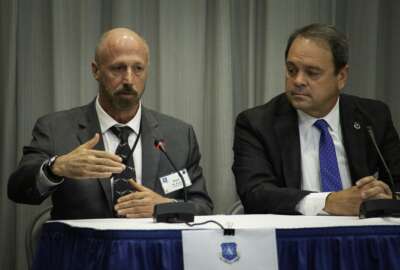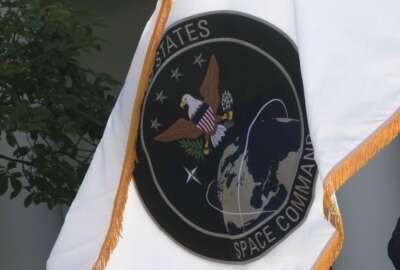
‘Tectonic shift’ of Space Command has intelligence community feeling aftershocks
Intelligence support for space as a warfighting domain will require new professionals, capabilities, alliances, and even a new perspective on the relationship b...
Redefining space as a warfighting domain made waves throughout the defense community as they began thinking about defending assets in space. Maj. Gen. John Shaw, deputy commander for Air Force Space Command, called the creation of Space Command a “tectonic shift.” Now the aftershocks of that shift are being felt in the intelligence community as analysts have to reconsider space’s role in intelligence gathering.
“When you think of space and intelligence together, you might be like me: I spent my career thinking about intelligence collection in space coming down to the Earth, intelligence from space,” Shaw said on Agency in Focus: Intelligence Community. “We need to think really, really hard now about intelligence for space. Where is that intelligence expertise that processes the capabilities? We have to understand what’s actually happening in the space environment.”
Shaw said the intelligence support the new command will require is a major priority for Gen. Jay Raymond, leader of Air Force Space Command. And it’s not just about the organizations that will provide the intelligence, but about the capabilities they can field. Those capabilities will need to be developed to protect and defend assets in space.
“Space is critical to modern warfare and to modern society and only increasingly so in so many different ways. And yet, it is perceived by potential adversaries to be vulnerable,” Shaw said Sept. 5 at the Intelligence and National Security Summit. “And so it is only logical and we should not be surprised that therefore our space capabilities would be threatened and that potential adversaries would develop capabilities to threaten those our space capabilities that are so critical. So the big tectonic shift that we’ve been facing, really, within the national security arena, but more focused at Air Force Space Command, is how do we make this shift to space as a warfighting domain?”
One thing Shaw said will have to happen is that the intelligence community will have to grow intelligence professionals specifically for the space domain. And then those individuals will have to support operational and foundational intelligence for the potential of warfare extending to space.
But Shaw was careful to emphasize that these professionals should be focused on intelligence “for space,” rather than “from space.”
Because space and intelligence are already inextricably linked. Satellites provide a huge amount of intelligence that analysts pore through day after day. And with commercial interests also entering the domain in a significant way, the amount of data coming from space is only going to increase.
“It’s a big data problem to understand what is going on within the space domain as well. Turns out space is pretty big. It’s huge. It’s only getting bigger in many senses, both from a cosmological as well as a policy [perspective],” Shaw said. “So how do we make sure that we’re harnessing all of the capabilities to understand and attack that problem?”
Stacey Dixon, deputy director of the National Geospatial-Intelligence Agency, has some thoughts on that.
“All of the potential information that will be accessible on demand anywhere around the world is very exciting,” Dixon said. “The creativity that’s going to be needed to create the tools that are going to be able to allow us to use this information to be able to store it more efficiently, those are the things that are a little more daunting.”
For one thing, it’s going to require machine learning and artificial intelligence, Dixon said. It’s just not possible to expand the number of people necessary to sort through and analyze that many data points. Those people, instead, need to be focused on creative, critical thinking tasks, leaving the routine and repetitive work, like analysis of every individual pixel in every photo, to machines.
But allies will also become more important as well. Right now, she said, there are about 70 countries with intelligence sharing agreements. Most of those agreements are bilateral.
“But more importantly, I think multilateral agreements are growing so that people in various countries in various regions are coming together, pooling data, and allowing the region itself to really benefit from the knowledge the individual countries are creating. So that part’s looking great,” Dixon said. “I’m thankful that there are many companies who are looking at the standards that are out there to be able to create systems and products that will fit in infrastructures and architectures that already exist. The danger in having so many different vendors is that these things will not work together. And we absolutely need them to be able to work together and to be able to ingest in systems that exist now and make systems that are able to exist in the future.”
Copyright © 2024 Federal News Network. All rights reserved. This website is not intended for users located within the European Economic Area.
Daisy Thornton is Federal News Network’s digital managing editor. In addition to her editing responsibilities, she covers federal management, workforce and technology issues. She is also the commentary editor; email her your letters to the editor and pitches for contributed bylines.
Follow @dthorntonWFED
Related Stories




